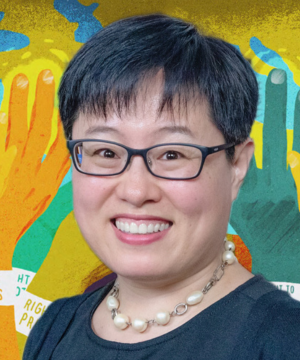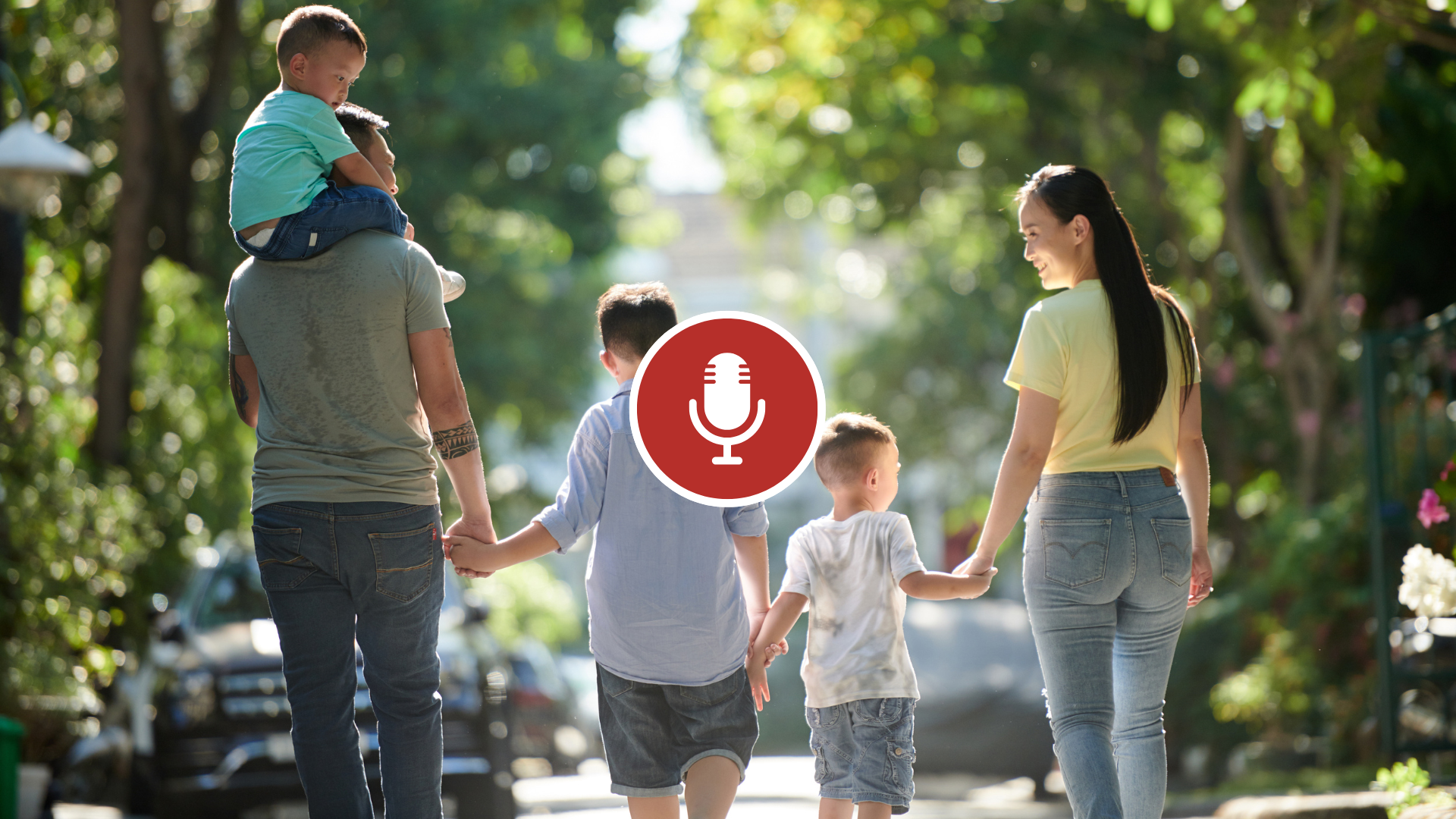What do Chinese American communities in the U.S. look like today— economically, socially, and culturally? Columbia University’s School of Social Work and Committee of 100 recently announced the results from a year-long survey that looked specifically at the health, economic, and sociopolitical conditions of today’s Chinese American population. The “State of Chinese Americans” survey, with nearly 6,500 participants across 46 states, is the first and largest project of its kind to date.
Dr. Qin Gao, lead researcher on the survey, Professor of Social Policy and Social Work and Associate Dean for Doctoral Education at the Columbia University School of Social Work, and Public Intellectuals Program fellow, joins the National Committee to discuss the survey’s findings, their relevance for policymakers, and the importance of understanding Chinese American communities for Asian American and Pacific Islander Heritage Month (AAPI).
The Fight for Representation: The State of Chinese Americans 2022

Qin Gao
Qin Gao is Professor of Social Policy and Social Work and Associate Dean for Doctoral Education at the Columbia University School of Social Work and the Founding Director of the Columbia China Center for Social Policy. Dr. Gao studies poverty, inequality, social policy, migration, and child development in China and their international comparisons. She currently leads The State of Chinese Americans Survey and is a member of the New York City Longitudinal Survey of Wellbeing study research team. She is also on the faculty of the Committee on Global Thought and Weatherhead East Asian Institute at Columbia University and a Public Intellectuals Program Fellow of the National Committee on United States-China Relations. Qin Gao’s book, Welfare, Work, and Poverty: Social Assistance in China (Oxford University Press, 2017) presents a systematic evaluation of the world’s largest social welfare program, Dibao. Her co-edited book, China Urbanizing: Impacts and Transitions (Penn Press, 2022), captures China’s urbanization in its historical and regional variations and explores its multifaceted impacts. Dr. Gao’s work has been supported by multiple national and international funding sources such as the Asian Development Bank, UNICEF, and the World Bank.
Transcript
A recent survey shows nearly 75% of Chinese Americans experienced racial discrimination in the past year. Can you discuss what the survey revealed about the impact these incidents have on the Chinese American community?
Qin Gao: It is indeed very troubling and sobering for our study to show that nearly three quarters of Chinese Americans experience some form of racial discrimination and racism related to vigilance in the past 12 months.
We ask the people about different forms of such experiences. These include, for example, over half felt that they were treated unfairly in restaurants or other places. They felt that people were looking at them, and over a quarter said they’ve experienced direct attacks or harassment and other kinds of hate crimes. This is a big issue.
But the main two consequences we see is, one, they put a lot of mental burden on Chinese Americans. People worry about going out. They constantly worry about the safety for themselves and their family members. They try to change their travel routes. They try to avoid certain social situations. So, this is a big burden that people have to face, and you can imagine how much risk this puts people at [in terms of developing] mental illness.
The other consequence is economic. Many people said they have to change their work schedule or they have to avoid some social functions, so they will lose out economically. We also have people tell us that now, instead of taking public transportation, they have to take a cab. So those are costly to people.
So we want to remind people that racial discrimination is hurtful and will bring both mental health burdens and economic consequences for our community.
What misconceptions about the Chinese American community are addressed in this survey?
Qin Gao: There are many misconceptions about the Chinese American community, and part of our motivation to do this study is to debunk these misconceptions using data and evidence.
I will give you two examples. One, our survey results showed that Chinese Americans are active political participants, which is something people don’t know so much about. Our findings show that 83% of Chinese American citizens are registered voters, a very high percentage. And among those, 91% actually showed up to vote in the 2020 presidential election. So this is a major voting bloc that no one, no party should ignore.
Another misconception is that Chinese Americans are homogeneous. They are doing well. They are the so-called model minority. And that’s not true. We show that through our data. Nearly a quarter of the sample experienced some kind of medical or economic hardship. These include having difficulty paying bills, worrying about running out of food, and delaying medical care. That’s very significant, and that’s not something people know about.
Another finding is that nearly 10% of this population experiences one or more kinds of disability, including physical, mental or developmental disability. Again, we need people to know about these facts because only if we know, we can bring the services and policies to meet their needs.
Why is acknowledging diversity within the Chinese American community important?
Diversity is important in any community simply because every voice is important, and everybody’s lived experiences are important. That’s also true for the Chinese American community. For example, our study shows that among Chinese Americans, nearly 40% speak more than one language at home. How amazing is that? This is the power of diversity. And this also has implications—for cultural identity, civic engagement, access to services.
We want to showcase and name that diversity so that we can celebrate the power of diversity. We know that the diverse Chinese American population have made many contributions to American society, and they will continue to do so if we give them the opportunity and recognize their contributions.
Why is it important for policymakers to understand the needs of Chinese Americans?
Qin Gao: Policymaking, at its best, is to respect people’s rights and meet people’s needs. And we know that some groups are more influential in policymaking than some others. In history, a lot of marginalized groups have been trying very hard to make their voices heard to influence policy. And Chinese Americans are one of those groups. It’s important through our survey to reveal what their needs are, what their demands are, so that policies can meet their needs.
Services that are accessible, that are culturally competent can be brought to this community, especially those who may be subject to more disadvantages within the community, for example, those with limited language ability or those with lower income. We can bring the resources and policies to them so that they are lifted up along with the others.
What does AAPI Month mean to you?
Qin Gao: AAPI Heritage Month, May, always brings a lot of pride and joy to me. The reason I undertook this research project, the National Survey of Chinese Americans, is because not only do I feel the honor to do it, but I also feel the responsibility that I should take up this project to tell the world who we are, our contributions and our needs.
For too long, the AAPI community has been marginalized. Our voices are not heard. We we’re kept invisible. But I think that needs to change, and May is the perfect month for us to tell our stories and build alliances so that the future can be more inclusive and more just.
We will have the month ahead and years ahead to share our findings from the survey project with the community members, different organizations, and policymakers so that what we learned from our valuable, wonderful study participants can be known to the world.
I also want to say that we need to tell our stories and celebrate our diverse and rich cultures, identities, and experiences in the other 11 months of the year: who we are, what we think, what we want, and how we want to change the world—all these matter every day of the year. So I encourage all of us to speak up so that our pursuits can be achieved, and we can join hands with other communities to make America and the world a better place.
Thank you.
This transcript has been lightly edited for clarity. Please refer to the video interview to ensure accuracy.
